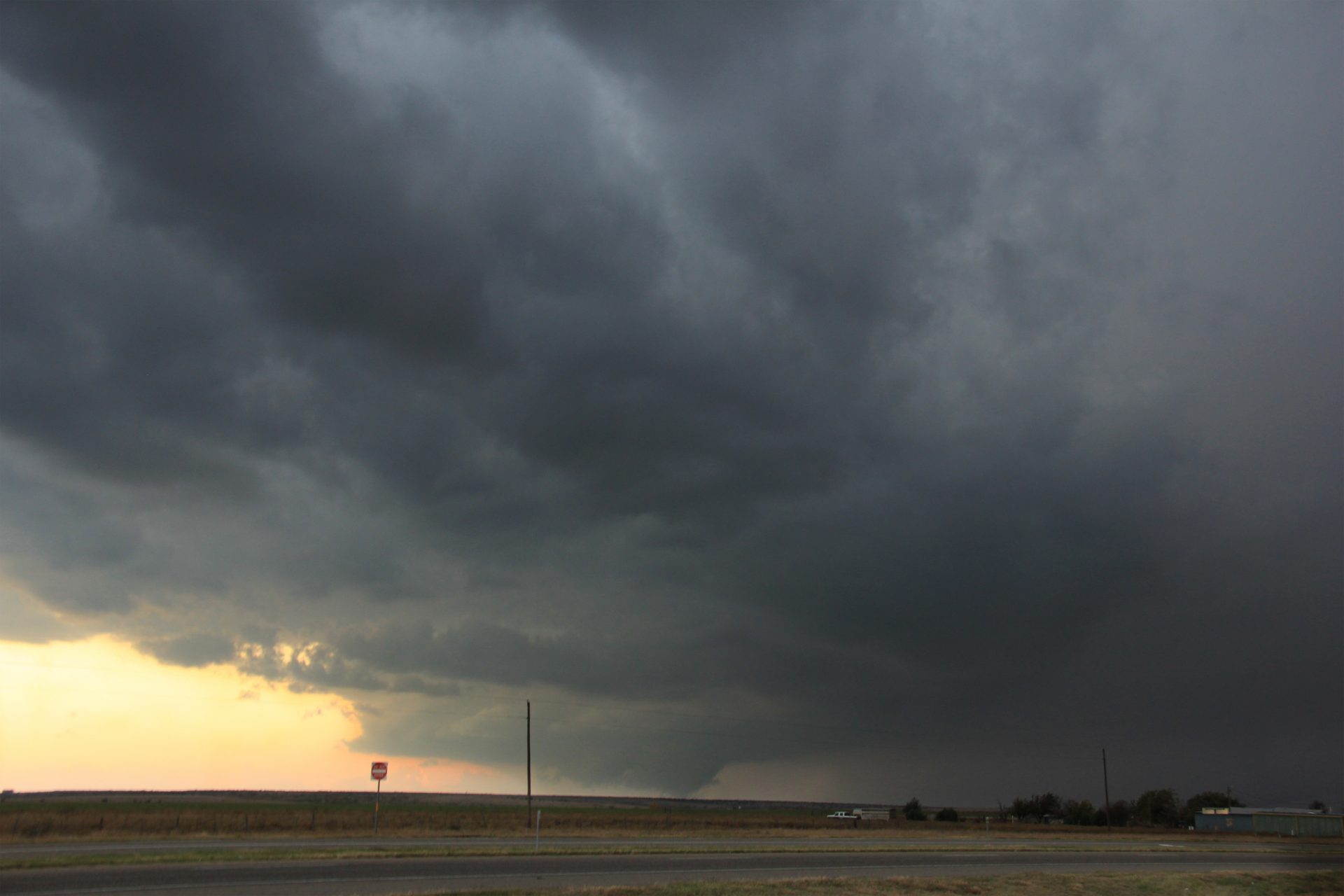Published on
November 16, 2015 was clearly going to be a widespread severe weather event in the Southern Plains, and since I hadn’t chased for a few months I decided to bite the bullet and go for it. I did not expect that this would become one of the most prolific Autumn tornado outbreaks in the region in recent memory. But, by the time the day was over, forty one tornadoes had been reported, many of them long-track and strong or violent. Scott and I caught three of them.
We spent much of the afternoon north of Amarillo, chasing small cells that were pulsing up and down in intensity, none of them able to fully mature. Finally, a lone storm developed west of Lubbock, and matured into a supercell as it passed south of Amarillo. We positioned at the town of Goodnight to intercept, and watched as it raced toward us from the southwest.
As the storm got closer, its structure became better and better visibly, with clear, strong rotation and a large bowled wall cloud at its base. The wall cloud was very near to the ground, and produced a brief, broad and weak tornado as it approached.

Visibility improved as our first tornado-warned supercell of the day approached.
If this was in fact on the ground, the tornado soon lifted and the wall cloud dissipated. We crossed from the north side of the road to the south as a train passed behind us – which we later learned was derailed near the town of Miami – to take more photos as the storm cycled.
The whole base of the storm was spinning like a top now, and a new cone tornado quickly developed. The condensation funnel only made it about two-thrids of the way to the ground, but there was debris at its base, confirming the touchdown.

The funnel condensed about two-thirds of the way to the ground, but a light dust whirl at its base confirmed the touchdown.
This tornado dissipated after just a minute or two, so we made our way east to Clarendon from where we could go north, paralleling the storm. By now the sun was setting and it was quickly becoming dark, but the storm was only just getting going. We watched as a cone tornado dropped near the town of Groom, then widened and became a fat stovepipe that raced to the northeast. It was pitch-black at this point, but flickering lightning backlit the tornado continuously, an ominous and looming silhouette.
We followed the tornado from about five miles to its south, travelling north toward the town of Pampa. As we chased it, we crossed the tornado’s damage path and Scott swerved to avoid slamming into a power pole that was snapped and laying across the road. Our right wheels hit the pole and we were jolted over it but able to keep driving.

A screen capture from video of the tornado, illuminated by a flash of lightning, as it approached the south side of Pampa while traffic raced away.
Fortunately this monster of a tornado did not strike Pampa. It demolished a Haliburton chemical plant south of town, then dissipated to the east. As we reached town, a second supercell that was following this one and producing a new large tornado was approaching from the southwest. After an amazing day and night of chasing, we decided to drive west and out of the path of this next storm, calling an end to the chase.
These two supercells tracked all the way through the Texas and Oklahoma panhandles, into Kansas. Along the way they continued to produce long-track and violent tornadoes, some of them up to a mile in width. Luckily no towns appear to have taken a direct hit, so what could have been a deadly and devastating situation was avoided. Nonetheless, this outbreak was truly an exceptional event for November on the Southern Plains and yielded my first Autumn tornadoes as well as a particularly relevant case study for The Kansas Project!

Storm Reports received by the SPC on November 16, 2015, illustrate the scope of this prolific autumn tornado outbreak.



Community Comments
There are no comments on this post
Want to leave a comment? Join our community → OR Login →